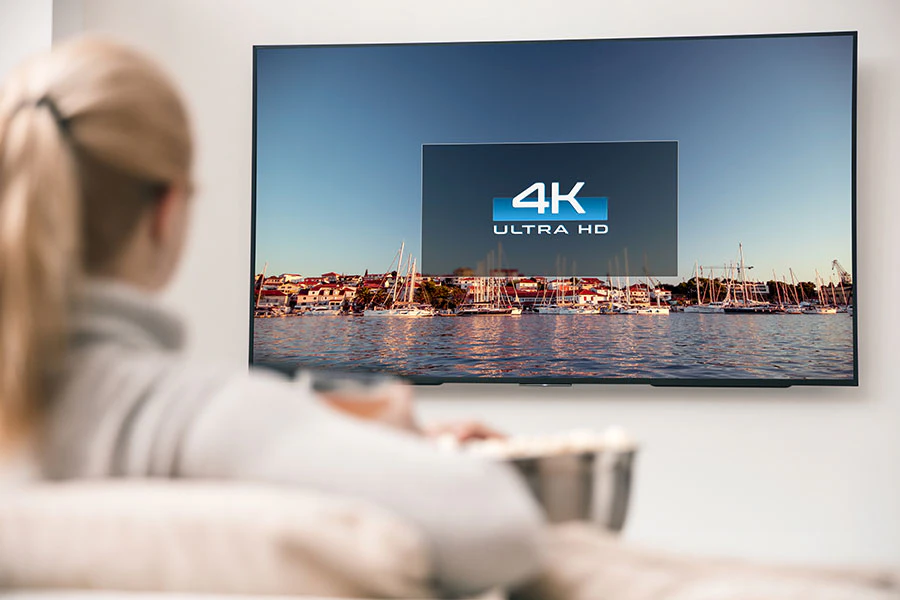
Television
High Dynamic Range
You know about 4K technology or Ultra High Definition (UHD). UHD is multiplying by four (UHD = 3840 x 2160 pixels) the resolution of high definition images (HD = 1920 x 1080 pixels). But the latest TVs coming out on the market today are also HDR and not only UHD.

WHAT DOES HDR MEAN?
"H.D.R. " means: High Dynamic Range.:
The HDR technology on a TV is mainly a question of brightness, as it can display more details and a better image contrast, since the human eye is very sensitive to variations in light intensity.
Indeed, in order to offer a more realistic image, compared with standard SDR TVs (S.D.R. = Standard Dynamic Range), there are more differences in brightness between the lightest and the darkest areas of the image. The larger the dynamic range of an image, the more the image is contrasted and true to the original.
FOR ENJOYING THE BEST OF VIDEOS IN HDR, WHAT ARE THE NECESSARY CONDITIONS?
All steps should be fully compatible, from content production to content distribution.
It is therefore highly recommended to have at home fiber optics, as an internet connection speed of at least 25 megabits per second is better adapted to this larger data flow, such as broadcasting of streaming video content.
Your internet box, or TV decoder, and TV set must also be compatible with the HDR10 standard.
Finally, the connection between the video source and your TV must have a HDMI 2.0a port, in order to manage the HDR-specific extended color dynamic range.
WHAT ARE THE HDR CONTENTS AVAILABLE?
All studios are currently developing HDR content. You will find HDR content on (non-exhaustive list):
- Video game consoles:
- Xbox One X
- Xbox One S -- compatible with HDR 10 content
- PlayStation 4 Pro -- compatible with HDR 10 content
- Video-On-Demand (V.O.D HDR compatible video streaming services:
- Amazon Prime Video
- Netflix Ultra HD Premium certification, compatible with HDR 10 standard.
- Ultra-HD Blu-ray Discs, HDR compatible (with the same certification issued by the Ultra HD Alliance)


To obtain a true HDR quality rendering, in accordance with HDR 10 standard, all details of the video are sent only once, at the beginning of the video stream.
The Ultra HD Alliance is supporting the new HDR 10 standard with a wider dynamic range, a 10-bit encoding by primary color (1024 shades), a luminance sampling quantized on at least 10 bits, and a subsampling of the 4: 2: 0 YCbCr chrominance, based on the actual contrast sensitivity of the human eye.
When TVs are compliant with HDR10 standard, an ULTRA HD PREMIUM logo is affixed to their packaging.


 Canada (English)
Canada (English)  México (Español)
México (Español)  USA (English)
USA (English)  América Central y el Caribe (Español)
América Central y el Caribe (Español)  Argentina (español)
Argentina (español)  Bolivia (español)
Bolivia (español)  Chile (español)
Chile (español)  Colombia (español)
Colombia (español)  Equador (español)
Equador (español)  Deutschland (Deutsch)
Deutschland (Deutsch)  France (Français)
France (Français)  Nederland (Nederlands)
Nederland (Nederlands)  United Kingdom (English)
United Kingdom (English)